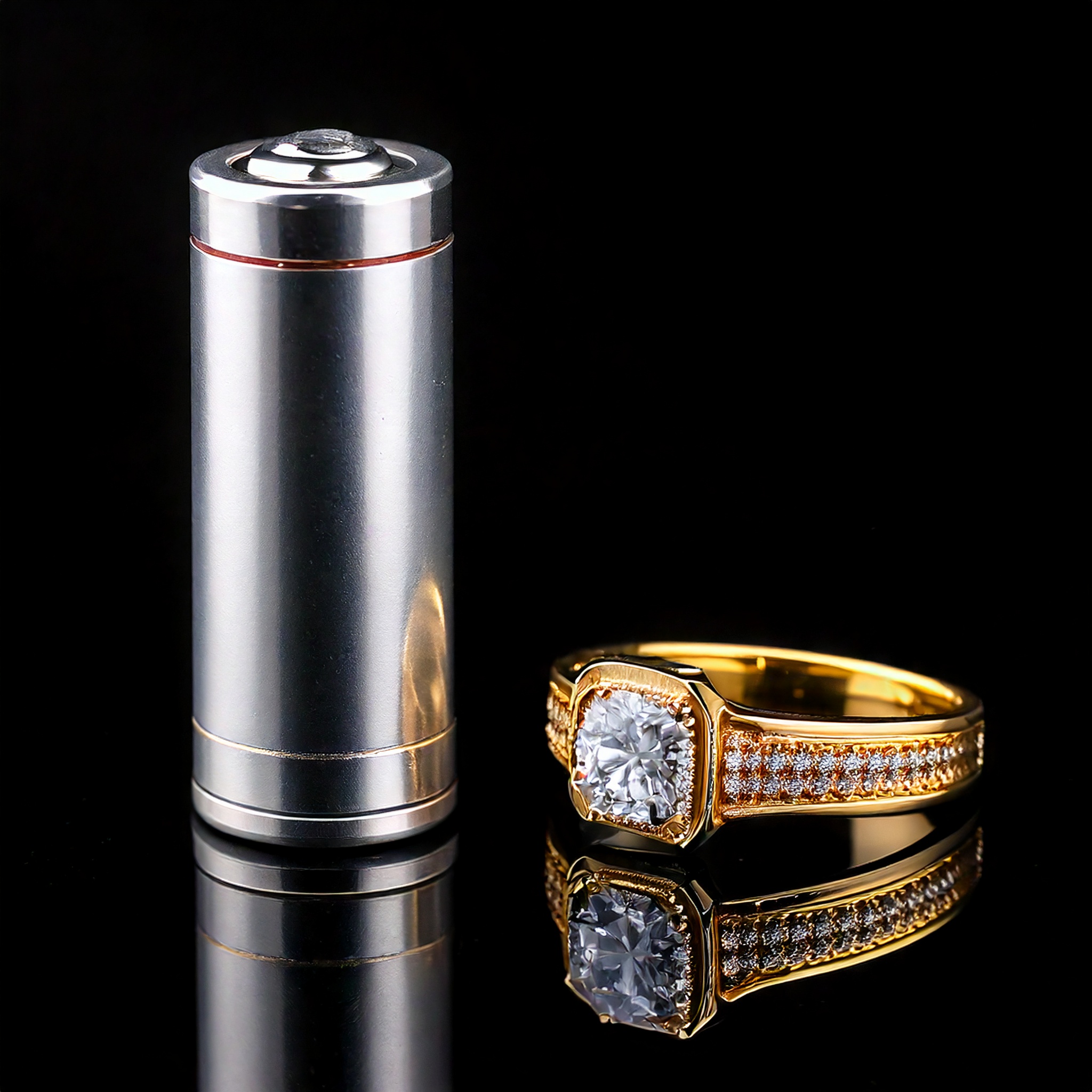THE ACTIVITY SERIES
The activity series (also known as the electrochemical series or metal activity series) is a list of metals arranged in order of their reactivity or oxidizing strength. It is used to predict whether a single replacement reaction will occur. The series indicates that a more reactive element will displace a less reactive element present in a compound in its cationic form.

A Lithium battery and a Gold ring.
Let's look at two familiar elements - Lithium and Gold. Lithium batteries are the strongest commercial batteries available. They produce a lot of energy, so it is fair to say that Lithium is a very active metal. In fact, it sits at the top of the Activity Series list. On the other end of the list is Gold - it is essentially unreactive. A golden object created thousands of years ago and buried in a cave will look very similar to how it looked on the day it was created. Let's look at two possible reactions between Lithium and Gold:
3 Lio(s) + AuCl3 (aq) → 3 LiCl(aq) + Auo(s)
3 LiCl(aq) + Auo(s) → 3 Lio(s) + AuCl3 (aq)
One reaction will occur and the other one will not occur. The spontaneous reaction is the one where the most reactive metal (reactant side) forms a less active metal (product side). This occurs in the first reaction . . . . the more active Lithium metal transfers its electrons to Au3+ to form Gold metal.
Most common listings of the activity series contain 21 elements. The elements above Hydrogen are considered "active metals" because they will react with the H+ ion (an acid) to form Hydrogen gas, H2. The elements below Hydrogen are termed "inactive metals" and do not need protection from the environment . . . . copper, silver, mercury platinum and gold. If you "know" the activity series, you can accurately predict whether a single displacement reaction will happen since an element that is above another in the series will displace the other from a compound. Learning 21 items "in order" is not an easy task, but the interactive below can help you accomplish this in 3 - 4 minutes . . . . with the use of a Periodic Table, which is always available.
Start the Activity Series tutorial by clicking the Play button in the lower right corner. Once you have accurately completed the tutorial, the words Tutorial Complete will be displayed.